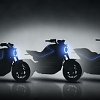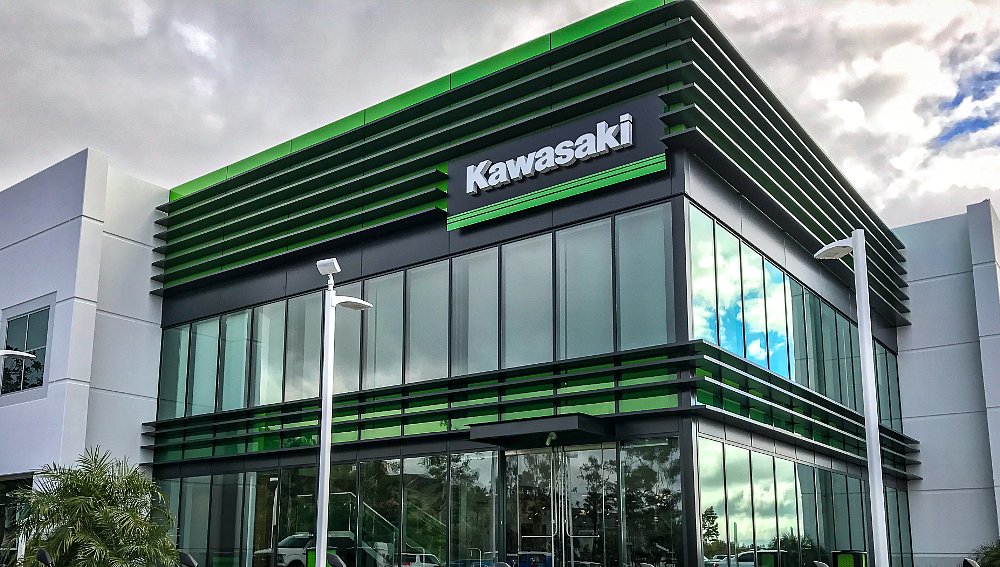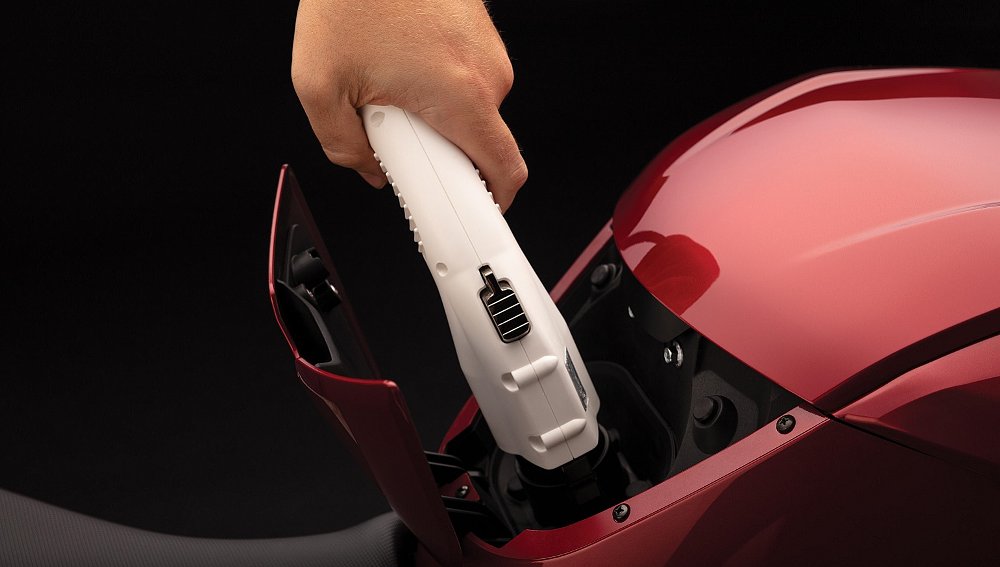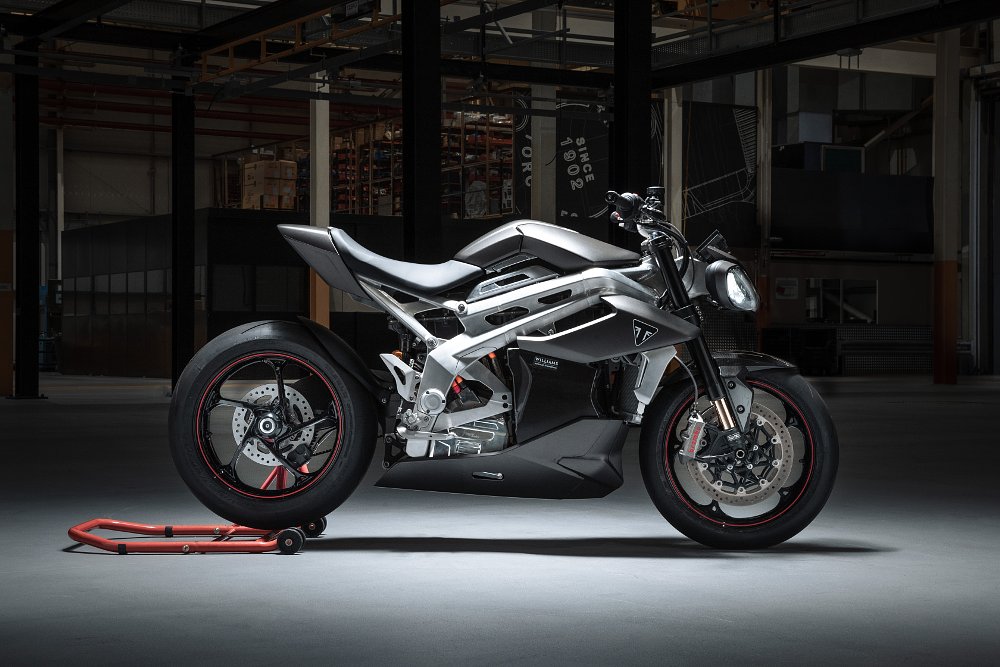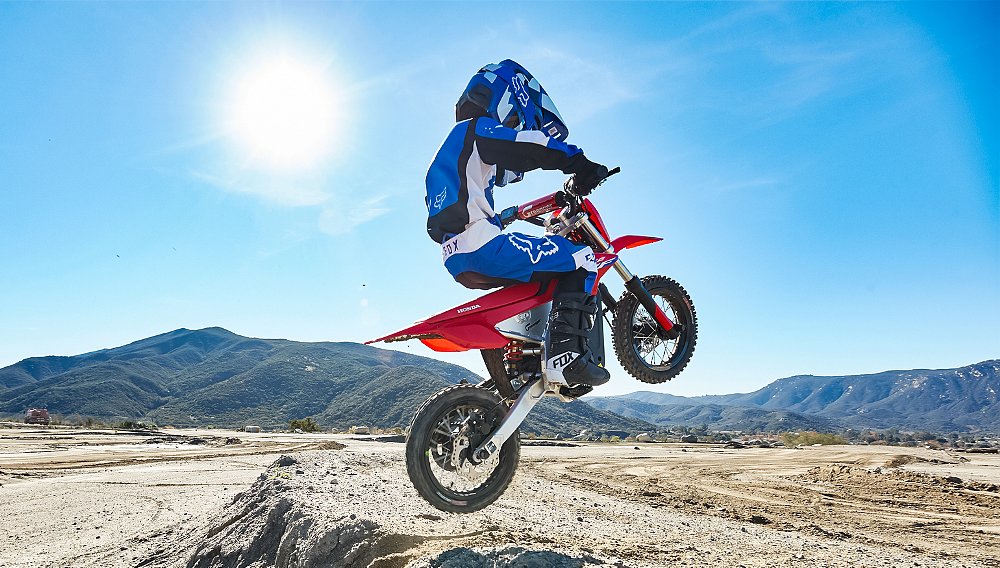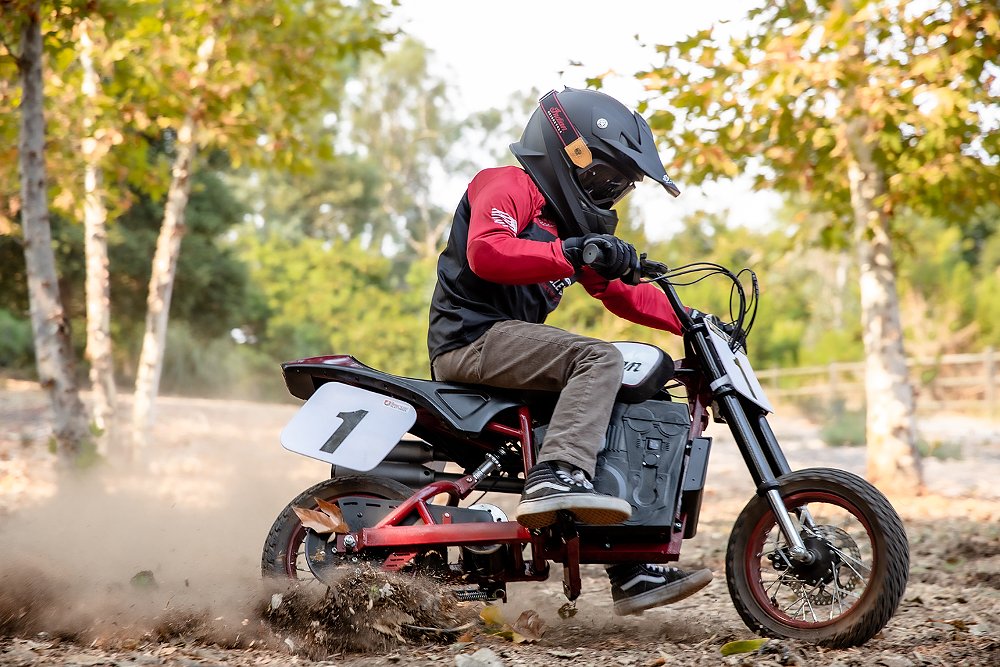Honda says at least 10 new electric motorcycles are coming in the next three years. Some will be practical, others will be meant for pure riding fun, and many more electric Hondas are on the way.
That’s just the beginning of the sweeping global plan announced by Team Red this week as the Japanese giant begins its transition away from fossil fuels.
The slow fade from ICE to electric
With an overarching goal of “realizing carbon neutrality with a primary focus on electrification,” Honda laid out a roadmap for the future in a rare international address to all motorcycle markets in a presentation by Kohei Takeuchi, Director, Executive Vice President and Representative Executive Officer, and Yoshishige Nomura, Managing Officer.
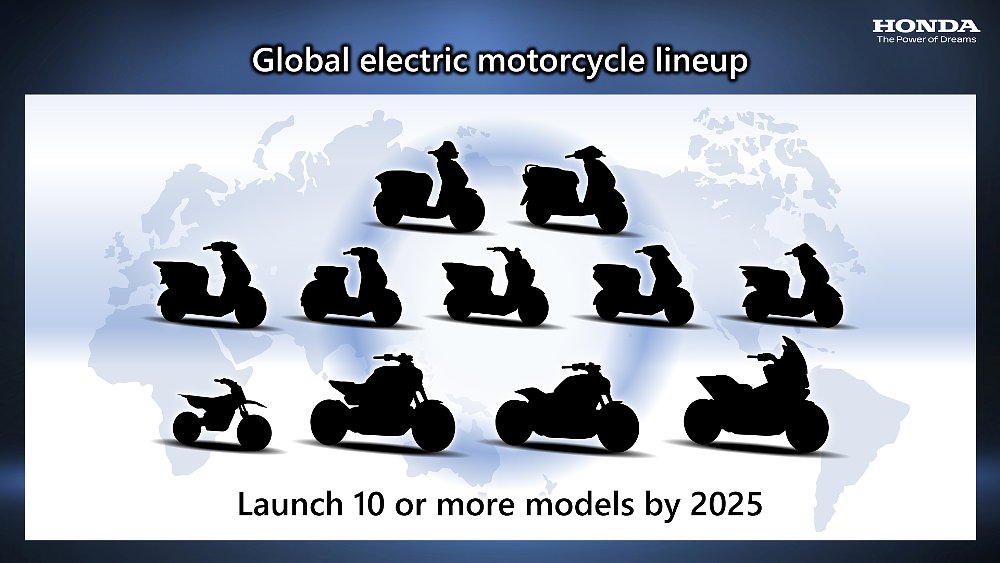
That said, Honda is not going to pull the plug on internal combustion engine (ICE) development any time soon. Honda expects 85% of its motorcycle sales to use ICE engines by 2030, and the remaining 15% will be electric models. To put that into perspective, 15% of total unit sales would represent an estimated 3.5 million two-wheelers. Honda has traditionally succeeded with small, affordable motorcycles and scooters for everyday transportation, especially in southeast Asia, and electrified versions of these vehicles will make up most of Honda’s electric motorcycle sales. Meanwhile, ICE motorcycles with ever-reducing emissions will remain at the core of Honda’s business through the 2030s. Flex-fuel vehicles will play a major role in markets like Brazil and India where partially and fully ethanol fuels are available.
Honda’s electric ambitions don’t stop with commuters and delivery vehicles. The “joy of riding” will continue to drive new motorcycle development, especially among larger and more powerful motorcycles sold in Europe and North America. But these motorcycles won’t simply be fun to ride. Honda envisions other ways to bring joy to riding through technologies that connect riders with each other, or with information and services they might need. While we’ll probably see these features on all kinds of motorcycles, Honda’s representatives discussed these ideas most in the context of EVs: find your riding friends, locate charging stations along a route, or automatically request service at a local Honda dealership.
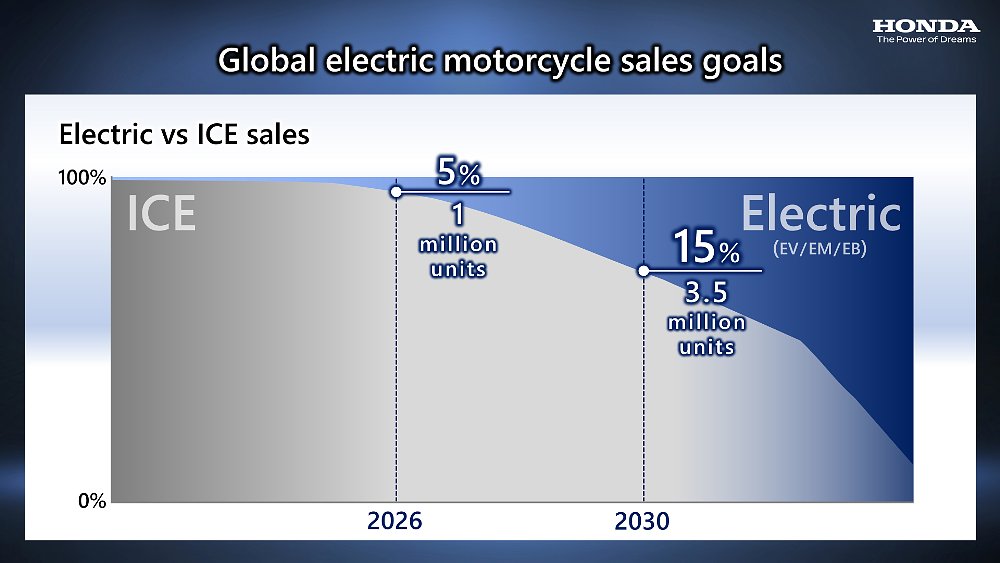
Carbon neutrality
Honda hopes to achieve carbon neutrality for all motorcycle products in the 2040s, and for all products and corporate activities by 2050. Its team acknowledged the challenges that these goals could present, from supply shortages to consumer sentiments toward EVs. One of the most prominent obstacles mentioned was the uncertain and ever-changing EV incentive programs in markets around the world. Incentives can make or break EV markets, especially as prices for fossil fuels continue to fluctuate. Regulations and charging infrastructure were also highlighted as major factors that would influence the success of Honda’s electric motorcycles.
The case for commercial electric motorcycles
Honda’s electric plans don’t stop at commuting and recreational riding. A third business segment — electric motorcycle fleets for business and government use — is crucial to the future success of the brand’s motorcycle division. Honda already supplies electric two-wheelers for the Japanese and Vietnamese post offices, and more fleet rollouts are coming soon in Thailand. Fleet sales have some obvious benefits, but in this case, they also have side effects, such as improving charging infrastructure and positively influencing EV policy at the local and national levels. Honda’s current “e: Business Bike” series uses swappable battery packs to overcome the current lack of charging stations along delivery routes.
A broad plan with few specifics
The strategic goals and motorcycle development trajectories laid out by Honda won’t be taken lightly. From its earliest days, the marque hasn’t relied on sensationalism or exaggeration to sell motorcycles. If Honda says it will move towards an electric future with a range of new models, then I see no reason to expect anything less. Three large electric motorcycles for “fun” riding should arrive in the United States, Europe, and Japan between 2024 and 2025. In addition, commuter models will be released at the same time in Asia, Europe, and Japan. There are also suggestions that motorcycles “equipped with a power source besides swappable batteries” will be revealed in the next few years. All of these models will be built on platforms that can be used to build other models. Honda also says that its solid-state batteries will be developed in-house using some technologies shared with the automotive side of the business.
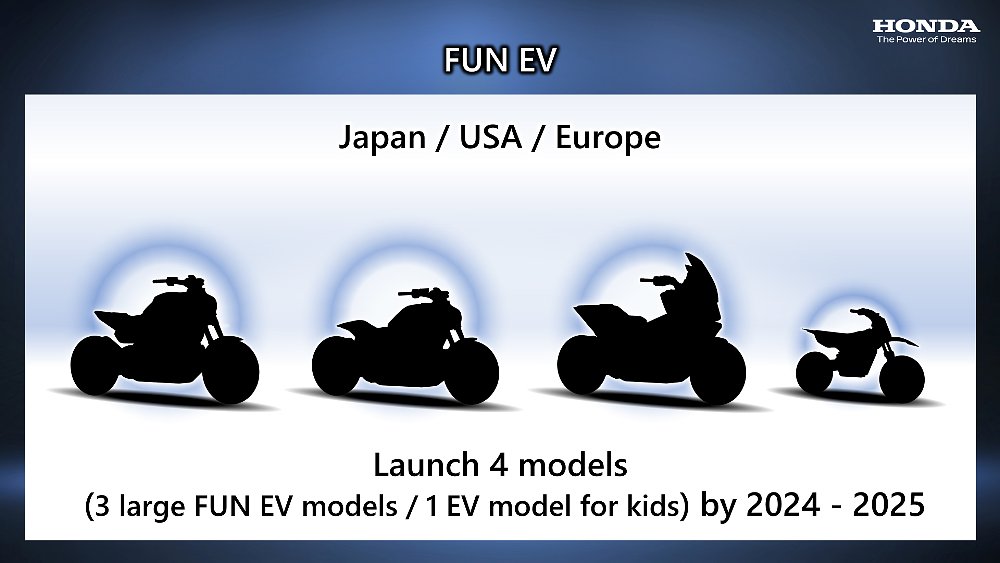
All very interesting, but the presentation didn’t offer much detail beyond sales targets and market shares. Questions about specific vehicle figures, like prices and performance characteristics, could not be answered in the Q&A session after Honda’s reps wrapped up their deck. I would have been shocked to hear any definite numbers like that, anyway. This announcement was meant to explain Honda’s plan for the near future, and to build some excitement for the upcoming EV products. The products themselves may vary, but Honda seems very likely to continue pursuing the next generation of electric motorcycles.
Eventually, Honda envisions a world where all its products are interconnected while sharing the road together. This week’s global announcement is a sign that even the most conservative Japanese manufacturers are getting ready to enter the electric motorcycle arena as pressures, both internal and external, push the industry towards full electrification. Kawasaki made a similar statement last year, and beyond Japan’s borders, other motorcycle manufacturers are getting ready to release their first- or second-generation electric motorcycles.
So here we are. The gasoline era hasn't ended, and the electric era hasn't really started (at least according to Honda's projections). I'd expect more news from Honda's EV division before this year is over.






